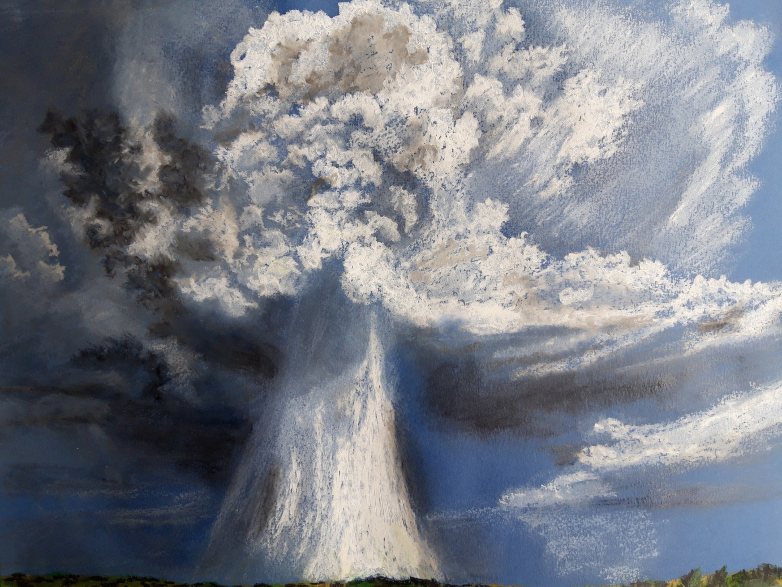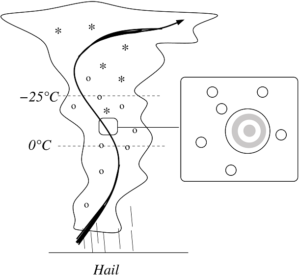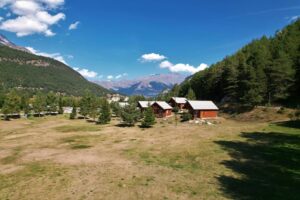Hail
A hailstorm is possible under certain storm conditions.

Hailstorm, oil pastel by Camille Risi from a photograph by @Mochi333Suzuki.
Specific features
Hailstones are ice particles, usually found between 1 and 10 centimetres of diameter. If you pick up one and cut it in half, you will see concentric layers of ice, like an onion. From afar, a hailstorm looks like a white curtain under a storm cloud. White, because every hailstone is a highly reflective mirror.
Origin
 We often say that water freezes under 0°C, but there is something called supercooled liquid water that stays liquid under 0°C. That happens when water does not have enough time to freeze. This is very frequent between 0°C and -25°C. That is where hail gets created. A hailstone is formed by the accumulation of successive layers of ice around a “core”, a tiny ice crystal for instance. A baby hailstone will collide with supercooled liquid droplets of water that will wrap around it and freeze, adding a new layer of ice. A hailstone takes around ten minutes to add up enough ice layers to reach a diameter of 2 centimetres, and falls at a speed of 65km/h. That requires a fast and durable updraft to keep the baby hailstorm flying during this formation time. And it is in supercells that we typically find such updrafts.
We often say that water freezes under 0°C, but there is something called supercooled liquid water that stays liquid under 0°C. That happens when water does not have enough time to freeze. This is very frequent between 0°C and -25°C. That is where hail gets created. A hailstone is formed by the accumulation of successive layers of ice around a “core”, a tiny ice crystal for instance. A baby hailstone will collide with supercooled liquid droplets of water that will wrap around it and freeze, adding a new layer of ice. A hailstone takes around ten minutes to add up enough ice layers to reach a diameter of 2 centimetres, and falls at a speed of 65km/h. That requires a fast and durable updraft to keep the baby hailstorm flying during this formation time. And it is in supercells that we typically find such updrafts.
Evolution
Hail can lead to great damages on houses and crops. A hailstone of 4 centimetres fall at 120km/h, as fast as a car on the motorway!
When to see it
It’s a short window for observation, and a direct observation is highly unrecommended for its dangerousness.
Did you know?
The record holder of the biggest hailstone is…American! It fell in the garden of an inhabitant of South Dakota in July 2010, measured 20,32 centimetres of diameter and weighed 880 grams, heavier than a French boules ball.






